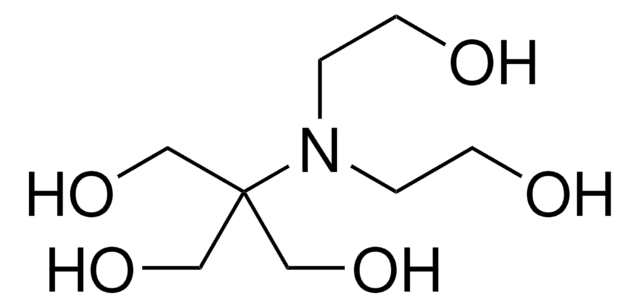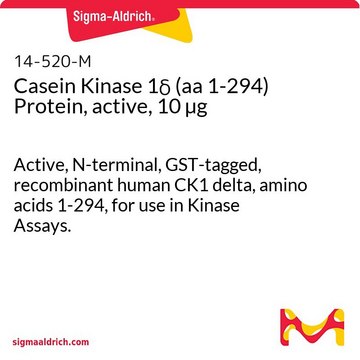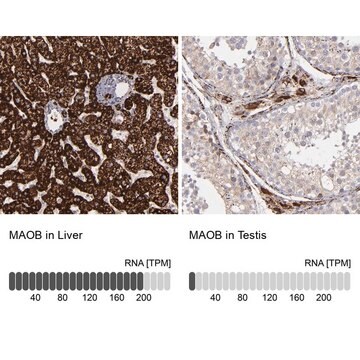AB15242
Anti-zDHHC8 Antibody
from rabbit, purified by affinity chromatography
Synonym(e):
Zinc finger DHHC domain-containing protein 8, Zinc finger protein 378, membrane-associated DHHC8 zinc finger protein, zinc finger, DHHC domain containing 8, zinc finger, DHHC domain like containing 1, zinc finger, DHHC-type containing 8
About This Item
Empfohlene Produkte
Biologische Quelle
rabbit
Qualitätsniveau
Antikörperform
affinity isolated antibody
Antikörper-Produkttyp
primary antibodies
Klon
polyclonal
Aufgereinigt durch
affinity chromatography
Speziesreaktivität
rat, human
Speziesreaktivität (Voraussage durch Homologie)
horse, bovine, Xenopus, chicken, pig, chimpanzee, ape, opossum, mouse, dog
Methode(n)
western blot: suitable
UniProt-Hinterlegungsnummer
Versandbedingung
wet ice
Posttranslationale Modifikation Target
unmodified
Angaben zum Gen
chimpanzee ... Zdhhc8(458662)
human ... ZDHHC8(29801)
Allgemeine Beschreibung
brain, and maximal expression coincides with peak forebrain synaptogenesis shortly after birth. Furthermore, their protein products are associated with brain mitochondria, including those in synaptic terminals. Among the six, only Zddhc8 influences mitochondria-regulated apoptosis when overexpressed, and appears to interact biochemically with established mitochondrial proteins. Zdhhc8 has an apparent interaction with Uqcrc1, a component of mitochondrial complex III. The two proteins are coincidently expressed in pre-synaptic processes; however, Zdhhc8 is more frequently seen in glutamatergic terminals (1).
Spezifität
Immunogen
Anwendung
Neurowissenschaft
Entwicklungsneurowissenschaft
Qualität
Zielbeschreibung
Physikalische Form
Lagerung und Haltbarkeit
Handling Recommendations: Prior to removing the cap, gently centrifuge the vial and gently mix the solution.
Hinweis zur Analyse
Fetal human brain
Sonstige Hinweise
Haftungsausschluss
Sie haben nicht das passende Produkt gefunden?
Probieren Sie unser Produkt-Auswahlhilfe. aus.
Lagerklassenschlüssel
10 - Combustible liquids
WGK
WGK 2
Flammpunkt (°F)
Not applicable
Flammpunkt (°C)
Not applicable
Analysenzertifikate (COA)
Suchen Sie nach Analysenzertifikate (COA), indem Sie die Lot-/Chargennummer des Produkts eingeben. Lot- und Chargennummern sind auf dem Produktetikett hinter den Wörtern ‘Lot’ oder ‘Batch’ (Lot oder Charge) zu finden.
Besitzen Sie dieses Produkt bereits?
In der Dokumentenbibliothek finden Sie die Dokumentation zu den Produkten, die Sie kürzlich erworben haben.
Unser Team von Wissenschaftlern verfügt über Erfahrung in allen Forschungsbereichen einschließlich Life Science, Materialwissenschaften, chemischer Synthese, Chromatographie, Analytik und vielen mehr..
Setzen Sie sich mit dem technischen Dienst in Verbindung.








